Use controls above or click here to open this Hometown Heroes podcast in a new window
95-year-old Pearl Harbor survivor Stu Hedley of San Diego, CA appears on episode #476 of Hometown Heroes, airing June 16-18, 2017.
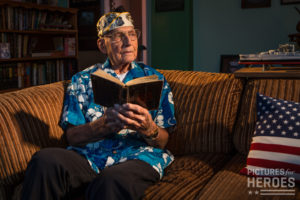
If you missed Hedley sharing the backstory of his upbringing in Buffalo, NY, the squabbles with his stepmother that altered his trajectory, and how he eventually enlisted in the Navy in 1940, you can hear it on the podcast of episode #475. In this episode, Hedley explains how he experienced the events of December 7, 1941, after waking up aboard his battleship, the USS West Virginia (BB-48).
“Get to your battle station on the double, this is the real thing!” is one of the first things he remembers hearing that morning.
Once he grabbed his hat and hustled topside, he witnessed the chaos of the attack, with planes heading in every direction. As he climbed the ladder toward his 16-inch gun turret, he saw a Japanese torpedo plane heading up the battleship’s port side. “I could see the pilot, the radioman, and the co-pilot laughing like everything,” you’ll hear him remember. The giant gun with enormous, 2,700-lb. projectiles was, for all intents and purposes, useless for the challenge at hand, but being in that battle station nearly claimed Stu’s life. The story of how he survived that day is one Hedley has told over and over again to countless school groups around the San Diego area, as well as other audiences around the country.
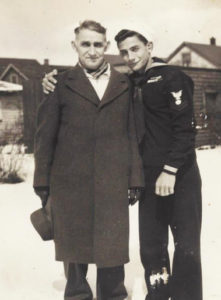
“When I go out to the schools, I put on a little demonstration,” Hedley explains. “I point out how the Lord protected me.”
He sees evidence of that protection in a lesson he learned as a nine-year-old that he says saved his life on December 7, 1941. Listen to Hometown Heroes to find out how Stu’s father taught him the proper way to sit in a chair, and what that has to do with the first of countless close calls the sailor survived during World War II. You’ll also hear what allowed him to witness the explosion that rocked the USS Arizona, as well as the gruesome sight of bodies flying through the air. 106 members of the West Virginia’s crew were killed in the attack on Pearl Harbor, and Hedley came extremely close to adding to that number. You’ll hear him explain how just above his left gun sat the ship’s catapult, loaded with two airplanes. When an armor-piercing shell was dropped in the direction of Stu’s position, it hit a scout plane and ignited the gasoline in its wing, burning the plane to a crisp. The shell split the catapult in half, and penetrated down through five more inches of steel, right into the left gun.
“The reason I’m here today,” you’ll hear Stu declare. “Is that shell did not explode.”
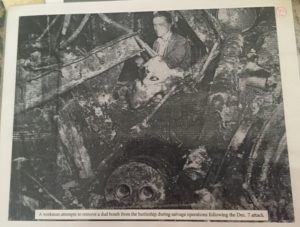
The bomb did not detonate, but the impact set off other explosions, one of which sent Stu and a friend flying through the air an estimated eight feet. The stunned sailors knew they needed to try to find a way out of that battle station. Listen to Hometown Heroes for the freeing feat of strength Stu chalks up to adrenaline, allowing them to get up to the deck of the listing ship, where they witnessed death and destruction all around. “If I don’t get killed today,” Hedley remembers telling his friend. “I’ll live to see the end of this war.” While watching the USS Oklahoma capsize, the sailors were ordered to climb across a line strung from the West Virginia to the USS Tennessee. Before they could do so, they watched in horror as a Japanese plane flew between the two ships and mowed down the five men who were already on that line with machine gun fire. Hedley decided he wouldn’t be crossing over on any lines, and you’ll hear him describe the alternative method of escape from the sinking ship that came to his mind in the moment. Once the aboard the Tennessee, Hedley instinctively headed toward the same battle station he manned on the West Virginia, only to be rerouted by a Marine who encouraged him to get to Ford Island’s beach. Underwater swimming was not his forte, but with oil burning on the surface, the 20-year-old had no choice. Twice he had to come up for air before making it ashore.
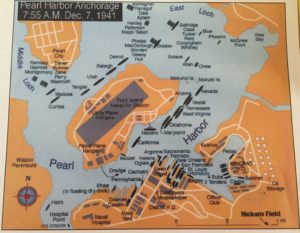
“I thrashed like mad to keep that oil and fire away,” Hedley explains. “Hottest breath I ever took in my life. It’s a wonder it didn’t scorch my lungs.”
The sailors were directed to the dispensary, where they were examined for burns and wounds before being pressed into duty helping to care for those more seriously injured. Stu was handed ointment for burns, sulfa powder to pour into wounds, and morphine to administer to those in severe pain and distress. “With those three items, we saved lives,” he says. Little did they know a second wave of Japanese planes was about to attack Oahu. While tending to those casualties at about 9:25 a.m., Hedley spotted two planes headed toward Ford Island and yelled “Duck!” at the top of his lungs.
“We went under the benches, the tables, whatever we could,” he says. “Glass just shattered all over the place, and one one the planes when it lifted up, dropped a bomb right in the center of that patio.”
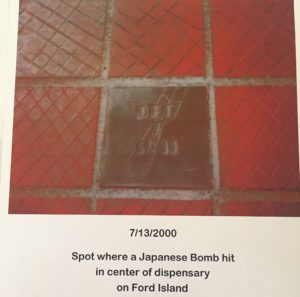
After the impact, Stu estimates that it took seven or eight minutes for the dust to clear. The red cross that had adorned the center of the patio was nowhere to be found, and glass and debris covered the patients and caregivers. Soon, Hedley and other men from the West Virginia were ordered back to the ship to fight fires. You’ll hear him explain what created a popping sound he mistook for a return of enemy planes as he worked next to a man who would become the inaugural director of the CIA, and how Stu ended up with a chance to examine his locker on the West Virginia. “I opened up my locker, there’s my blues, my dungarees, my whites,” begins his inventory of its contents. “But the minute I touched them, they turned to powder, from the heat.” The photos and negatives he had stored in a drawer had been turned to “one mass of goo,” but he was able to recover a half-penny that had been given to him by a prescient British sailor two months before. Hedley still has the coin, and you’ll hear him relate the full story of how he acquired it on Hometown Heroes. Stu insists a year of practice maneuvers helped prepare sailors for the “real thing” on December 7, 1941, and he cites his faith as helping him through the challenges he faced.
“The Lord prepared me for everything,” you’ll hear him say. “He assured me ‘I will never leave you nor forsake you, I will be with you whatever you go through.’ That was where my faith was and my trust. That was all during the war.”
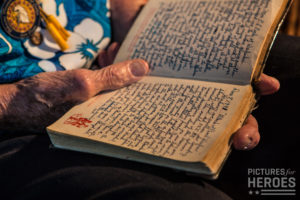
The close calls Hedley survived on America’s first day in World War II are challenging enough to fathom, the devastation of that day astounding. But Stu is quick to point out that he went on to survive 13 major engagements on his next ship, the cruiser USS San Francisco (CA-38). None of those 13 was more harrowing than the Naval Battle of Guadalcanal in November of 1942. “Our ship was literally demolished,” Hedley starts, explaining how he and a fellow sailor were assigned to take over Gun 6 on the upper deck.
“Gun 6 was the only gun that didn’t get demolished,” he continues. “We had 75% of our officers killed in 45 minutes aboard that ship.”
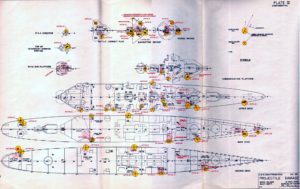
236 men were killed that night, and when morning came, Stu was tasked with identifying bodies. You’ll hear how he carried out that gruesome duty, and what he calls “the most horrible experience” of his life. He also relates what he witnessed when torpedoes that narrowly missed the San Francisco struck the USS Juneau, destroying the ship in mere seconds. 687 men died aboard the Juneau, including the five Sullivan brothers. Among the other memories you’ll hear from Stu are the time Mother Nature almost claimed his ship in the Bering Sea, how the power of forgiveness helped heal his relationship with his stepmother, and what caused him to give up alcohol and cigarettes. As for why he maintains a busy schedule of speaking appearances, relating his story to countless audiences over the last few decades, Hedley cites the motto of the Pearl Harbor Survivors Association. “Remember Pearl Harbor, keep America alert,” he says, lamenting that, in his view, “America is asleep.” And what is it that keeps him so sharp, youthful, energetic, and determined at age 95?
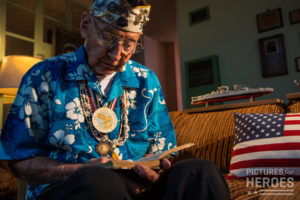
“The Lord,” he answers immediately. “I get up in the morning and I thank him for the night’s rest, and I ask him to give me the wisdom, guide and direct me to the people he wants me to talk to, and give me the message that he wants me to share.”
He has shared his story thousands of times in thousands of venues, and it’s an honor and a privilege to have him share it again on Hometown Heroes
—Paul Loeffler
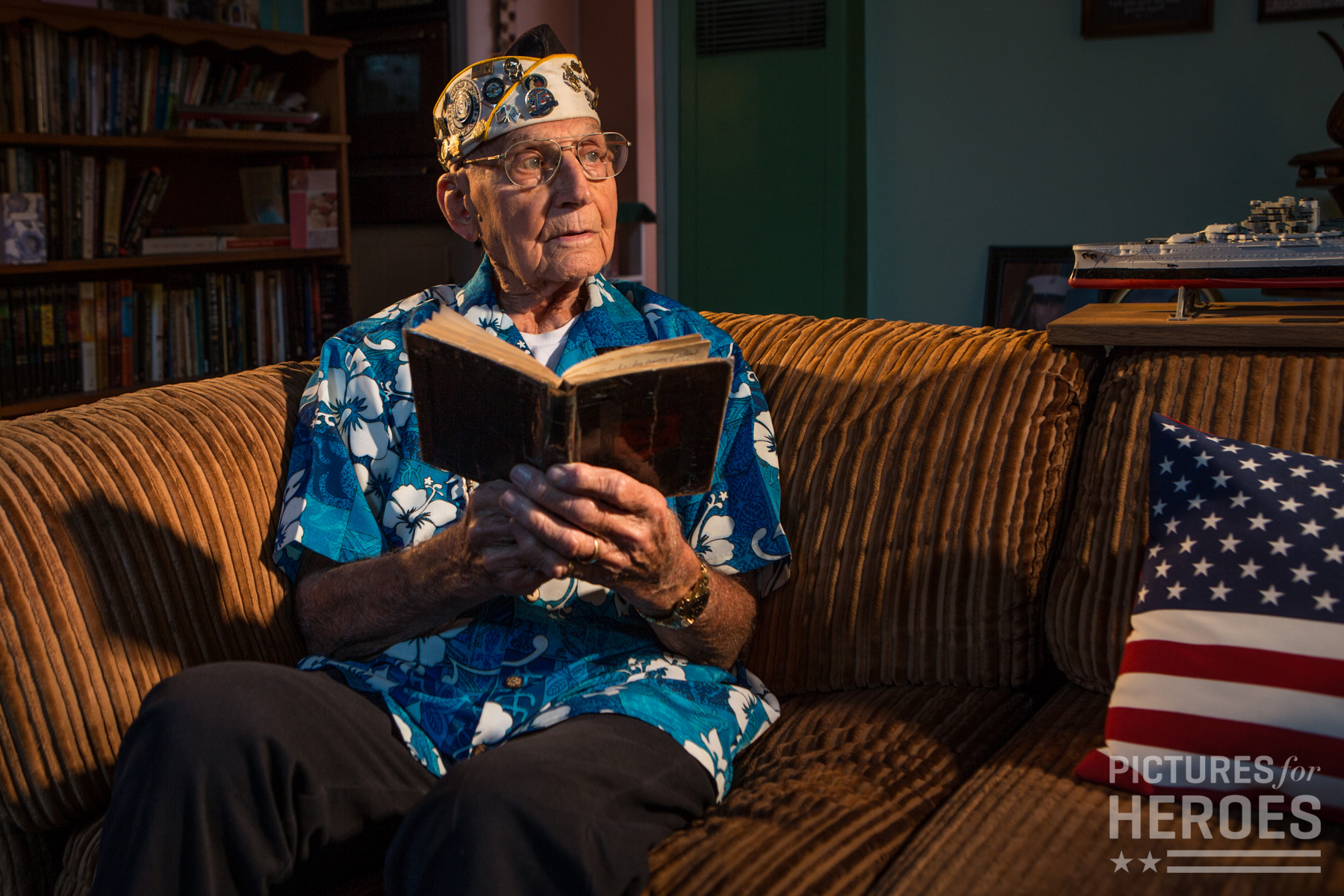

Leave a Reply